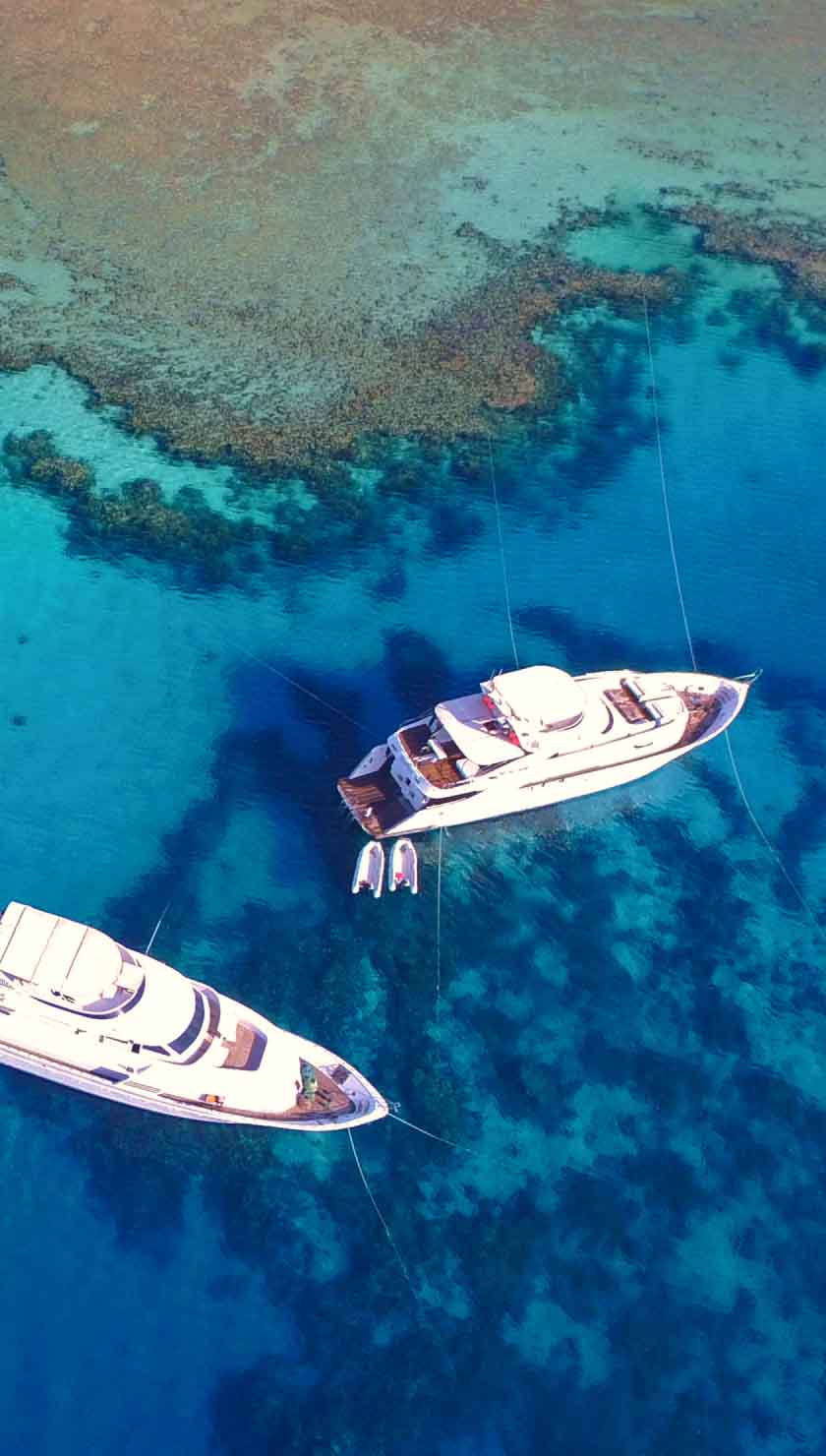Liveaboard Diving in Palau
What To Expect On A Palau Liveaboard
Liveaboard diving in Palau must surely be at the top of most divers 'must dive' list and so it should be!! The Republic of Palau is an island country located in the western Pacific Ocean in Micronesia with a population of 21,000. The capital of Palau is Ngerulmund located on the island of Babeldaob, however, the largest city is Koror with two-thirds of Palau's population living there and where most of the tourism goes to. Palau is made up of 250 islands and some of these make up the western chain of the Caroline islands of Micronesia. Palau liveaboards will visit some spectacular sites where the marine life is astounding. From the famous Blue Corner to the wrecks at Peleliu, Micronesia liveaboards can offer an itinerary to suit.
The first settlers to Palau were from the Philippines and arrived over 3000 years ago, but 900 years ago the Europeans started exploring the area and from then until now, multiple nations have had power over Palau. In 1947 it became part of the US governed Trust Territory of Pacific Islands and it gained sovereignty in 1994. This also means that they use the US dollar as currency. The population is a mix of Japanese, Micronesian and Melanesian and speak mainly Palauan and English. The islands are mostly volcanic and limestone rock islands and the overall area is 465 kilometres squared (179 miles squared). One of the most famous parts of Palau are the Rock islands, a unique phenomenon of forest-covered, limestone islands clustered together within 35km (20mi) creating a spectacular area for diving and exploration.
Palau Underwater
Liveaboards in Palau have so much to offer divers when it comes to dive sites and marine life, most likely whatever you are hoping to find, you will find here. Many dive sites in Palau visited by liveaboards have flourishing reefs inhabited by large schools of colourful fish, living around the jungles of corals, sea fans and sponges. Some of the larger species include green turtles, hawksbill turtles, quite a few species of sharks including grey reef, white tip and leopard sharks, there are also Wahoos, Napoleon Wrasse and the elusive Mandarin fish. There are also multiple wreck sites with sunken ships and many other World War II artefacts.
Dive Sites Of Palau
Palau has many unique dive sites at which you can see a high abundance of different marine life. In general, this area will provide divers with thriving reefs, drop-offs, drift dives, vast amounts of marine life, caves, and wreck dives. Along with that they have averaged that this area has over 1300 species of fish and over 700 species of coral.
BLUE CORNER is possibly the most famous dive site in Palau, a literal environmental corner which is located on the South West reefs of Palau islands and on the Northwest end of Ngemelis Island. It is located about 46 km (25 mi) from Koror and will offer divers a great chance for seeing sharks. Here you will also see extremely large schools of fish and also many larger marine animals. There are strong currents here so it is not suitable for beginner divers but this does make it a great drift dive spot.
GERMAN CHANNEL is another of the more popular dive sites; this channel was created when the Germans needed to transport phosphorous from the lagoon out to the ocean. The channel itself has extremely strong currents but the dive site is located on the southwest mouth of the channel. This is one of the best dive sites in the world to see and come close to Manta Rays which can have a wingspan up to 3m (10ft).
JELLYFISH LAKE Whilst not a site for scuba diving, as the bubbles can harm the jellyfish, it is a unique experience to snorkel and swim amongst millions of harmless (no stingers) jellyfish. One of the best known in water experiences to do in Palau.
IRO MARU WRECK is one of the wrecks you may visit on a Palau itinerary, a large fleet oiler which lies at 23-35m (75-114ft) with coral-encrusted canon guns and much, much more. There are multiple wrecks to be seen in this area, mostly all from WWII, all which have created their own personal ecosystems underwater.
CHANDELIER CAVES is a cave system made up of 5 separate caves, all which have stalagmites and stalactites formed inside them which resemble sparkling chandeliers. You will need to bring a torch and be a confident diver within caves, if so then they are beautiful caves to explore.
Top Tips For Divers
There are three main seasons, the high season runs from December to March and during this time there are flat, calm seas and drier weather, the shoulder seasons are April, July and August, October and November when where the winds are stronger and more rainfall, and lastly the low season, May, June and September where the weather fluctuates the most, but during these months there are the least amount of visitors and lowest prices. Many of the dive sites have specific requirements, such as needing to be a wreck diver or cave diver, so please do check before going.
Getting To Palau
To get to these sites, or to get to any Micronesia liveaboards which will be visiting this area, then you will need to make your way to Koror, which is the largest city in Palau. The airport is located on the island of Babeldaob which is connected by a bridge to Koror. The airport is called The Roman Tmetuchl International Airport. There are only five destinations which have outgoing flights to Palau, so you would have to fly to one of these first; Philippines, Taiwan, South Korea, Japan and Guam. Once in Palau, everything is organised mostly from Koror, most dive shops are located there and any liveaboards will depart from the Malakal Harbour in Koror.











